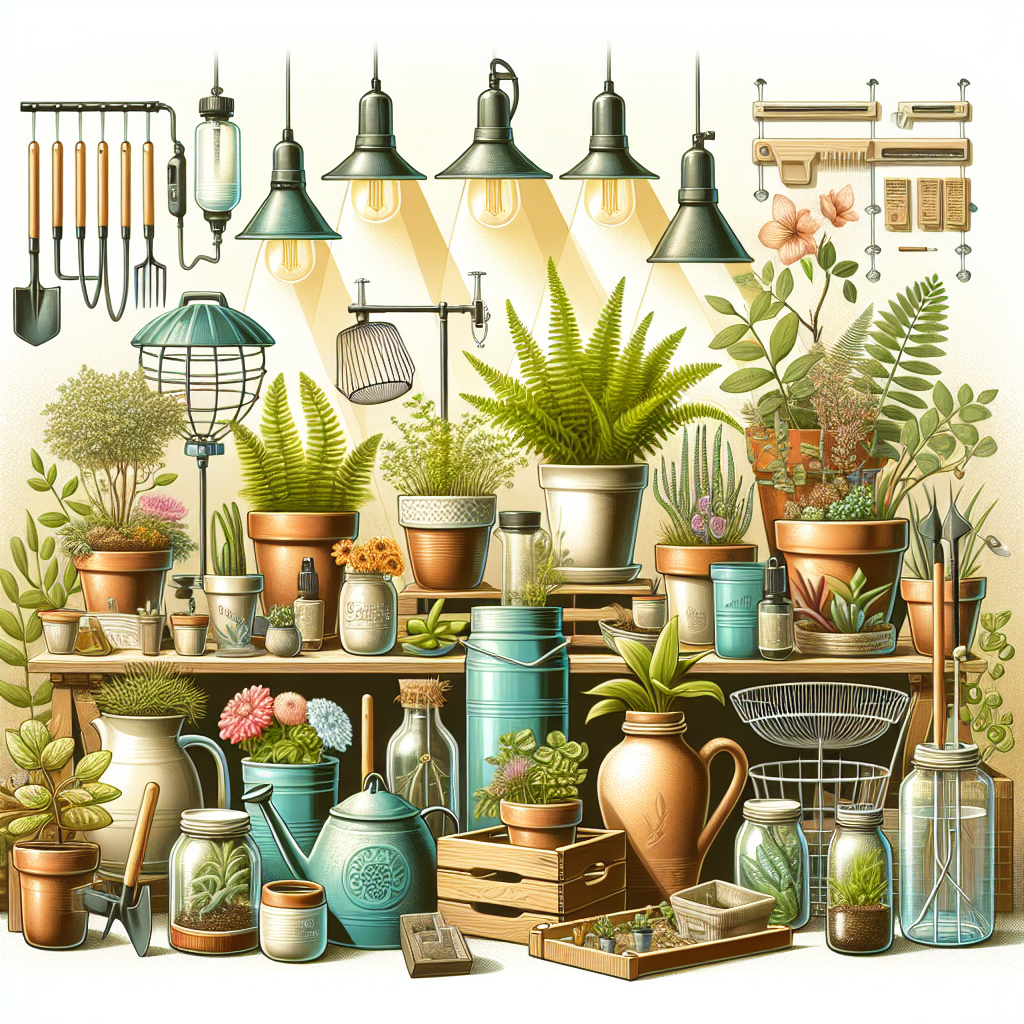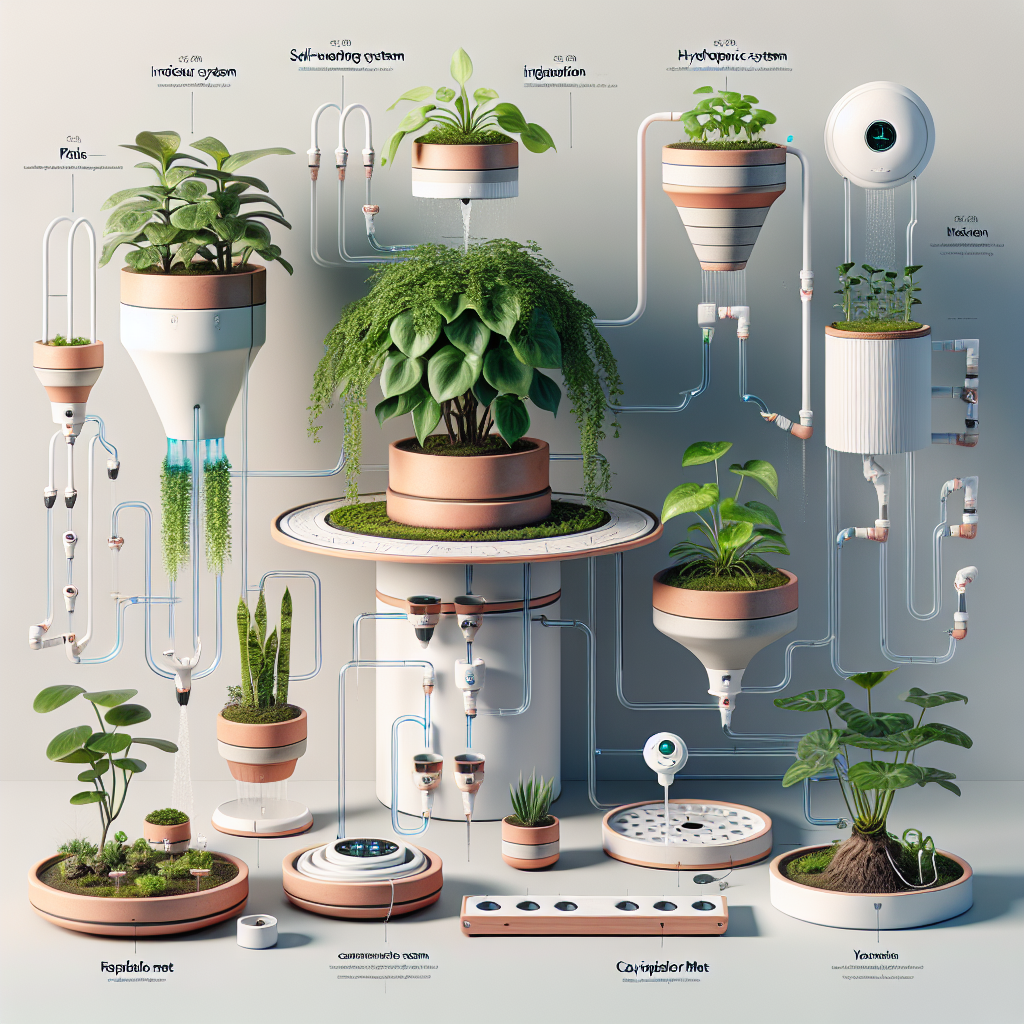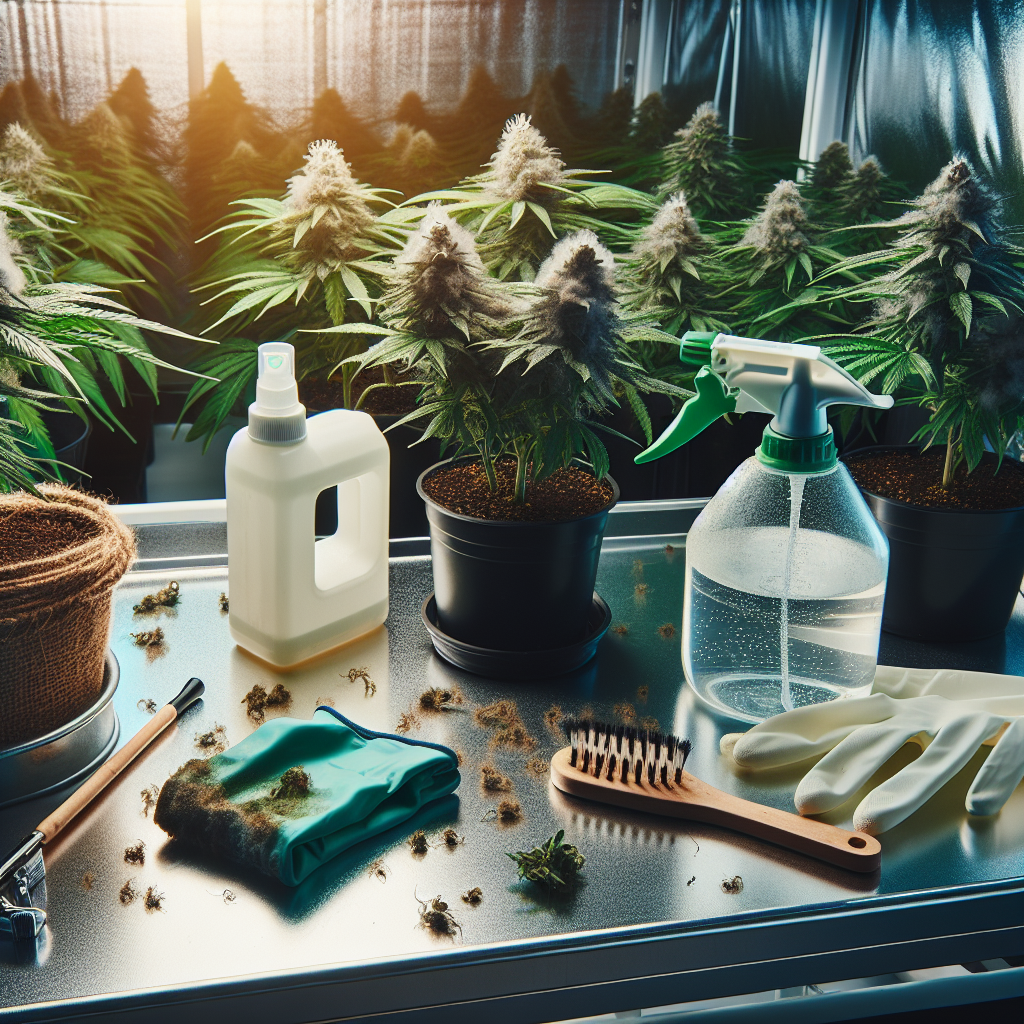Container Gardening Indoors: The Ultimate Guide
Updated November 17, 2024 at 12:18 pm

Understanding Container Gardening Indoors
Container gardening indoors is a fantastic way to bring a bit of nature into your home, regardless of the size of your living space. This type of gardening allows for a lot of flexibility, enabling you to grow a wide variety of plants that can improve air quality, add a decorative touch, and even provide you with fresh herbs and vegetables. If you’re a plant lover living in an apartment or a house without a garden space, don’t worry – with a little knowledge, you can become a green thumb in no time. This ultimate guide will provide you with the essentials of starting and maintaining a thriving indoor container garden.
-
Pet Friendly:
When selecting plants for your indoor garden, it’s important to consider the safety of your pets. Look for non-toxic options like spider plants and Boston ferns to keep your furry friends safe.
Light Requirements:
Understanding the light requirements of each plant is crucial. While some plants like succulents thrive in bright, direct sunlight, others such as snake plants prefer indirect light.
Watering:
Overwatering is a common mistake in container gardening. Ensure you’re familiar with the watering needs of your plants and provide proper drainage to prevent root rot.
Humidity:
Indoor environments can have varying humidity levels. Tropical plants may require a humidifier or regular misting, whereas cacti and succulents prefer dry air.
Temperature:
Most indoor plants prefer temperatures similar to what we’re comfortable with, around 65-75°F (18-24°C). Avoid placing plants near drafty windows or heat sources that could cause fluctuations.
Difficulty:
Choose plants according to your experience level. If you’re a beginner, opt for low-maintenance varieties like pothos or ZZ plants to set yourself up for success.
Choosing the Right Containers
When it comes to indoor container gardening, selecting the right pot is just as important as choosing the right plant. The container influences not only the health of your plant but also the overall aesthetic of your indoor garden. Pots come in an array of materials like plastic, terracotta, and ceramic, each with its own pros and cons.
Terracotta pots are porous, which means they allow air and water to move through them, helping prevent soil disease and root rot. However, they can dry out quickly, which might not be ideal for plants requiring consistent moisture. In contrast, plastic pots retain water better and are lightweight, but they don’t offer the same airflow benefits as terracotta.
When picking a container, also think about size. A pot that’s too small can constrict a plant’s growth, while one that’s too large might lead to overwatering issues. It’s best to choose a container that’s just one size up from the plant’s root ball.
Let’s consider the ‘Lechuza Pon Plant Substrate’ as a container option for your indoor gardening. According to online reviews, it’s highly appreciated by plant enthusiasts for its self-watering feature which minimizes maintenance. It mimics the plant’s natural environment by using a pon that allows the roots to take in water as needed. The consensus among users is that it is ideal for busy individuals or those who tend to forget watering schedules. However, some note that the upfront cost is higher than traditional pots, but the benefits may outweigh this in the long run.
Pros:
- Self-watering feature is convenient and time-saving
- Prevents overwatering and underwatering
- Promotes healthy root growth
Cons:
- More expensive than other containers
- Might not suit all plant types, particularly those that prefer dryer soil
Find This and More on Amazon
Picking the Right Soil and Fertilizer
Soil is the lifeblood of your plants, and indoor container gardening requires a slightly different approach than outdoor gardening. It’s essential to use a potting mix that is designed for container use; these mixes ensure proper drainage while holding enough moisture to keep the roots happy.
An excellent choice for those looking to streamline their indoor gardening is the ‘Miracle-Gro Indoor Potting Mix.’ It’s specially formulated to be less prone to gnats, with no compost or bark, which are known to shelter these pests. Users have positively reviewed this mix for its consistency and plant-supporting properties. One thing to note is that it already contains fertilizer, so additional feeding should be done cautiously to avoid over-fertilizing.
Pros:
- Gnat-resistant formula helps prevent indoor pest problems
- Specially designed for container plants
- Contains controlled-release fertilizer
Cons:
- May require monitoring to prevent over-fertilization
- Some plants may require a more specialized soil mix
Find This and More on Amazon
Lighting: Imitating the Sun Indoors
One of the biggest challenges of indoor gardening is providing enough light for your plants. Natural light can be limited, especially in apartments or rooms without south-facing windows. This is where grow lights come in; they can mimic sunlight and provide the necessary light spectrum to keep your plants thriving, even in the darkest of spaces.
LED grow lights, such as the ‘Spider Farmer SF-1000 LED Grow Light,’ are a popular choice. According to product reviews, the full spectrum light output is highly effective for growth at all plant stages and the energy efficiency is appreciated for keeping electricity bills low. It’s said that people also value the quiet operation, as there’s no fan, which makes it more suitable for living spaces. Be aware, however, that installation may require some technical know-how.
Pros:
- Energy-efficient LED technology saves on electricity costs
- Full spectrum light promotes healthy plant growth
- Fan-less design ensures quiet operation
Cons:
- Initial cost can be higher than traditional grow lights
- Installation may be slightly complex for some users
Find This and More on Amazon
Maintaining Proper Watering Techniques
Watering your indoor garden correctly is crucial for plant health. How much and how often you need to water depends on various factors, including the type of plant, the size of your container, the humidity in your room, and the intensity of light the plant receives. For instance, succulents like to dry out between waterings, while tropical plants such as a peace lily might enjoy consistently moist soil.
A tool that can greatly assist in maintaining the right water levels for your plants is a soil moisture meter. The ‘XLUX Soil Moisture Meter’ is particularly liked for its ease of use and accurate readings. Reviews often commend it for helping avoid both under and overwatering by displaying the moisture level of the soil. Using such a tool means you can water your plants based on their specific needs rather than a set schedule, which is much healthier for them.
Pros:
- Simple to use, even for gardening novices
- Provides accurate moisture level readings
- Helps prevent common watering issues
Cons:
- Care needed not to leave in soil too long and disturb roots
- Not suitable for non-soil mediums like hydroponic systems
Find This and More on Amazon
Pruning and Plant Maintenance
Regular pruning is an important aspect of plant care that encourages healthy growth and helps your plants remain vibrant. Pruning allows you to shape your plants, remove dead or diseased foliage, and promote new growth. With indoor plants, it’s also a way to keep them from outgrowing their space.
For precision pruning, a reliable pair of garden scissors is invaluable. The ‘Fiskars Micro-Tip Pruning Snips’ are often praised in reviews for their durability and precision. Users like how easy they are to handle, especially for small or delicate plants, and they appreciate the fact that these snips can get into tight spaces without damaging other plant parts. Just remember to clean your tools between uses to prevent the spread of disease.
Pros:
- Sharp, micro-tip blades for detailed work
- Comfortable grip for extended use
- Durable and long-lasting
Cons:
- More expensive than some other pruning tools
- Requires regular cleaning to maintain efficiency
Find This and More on Amazon
Managing Pests and Diseases
Pests and diseases can be a significant challenge in indoor gardens, but early detection and proper management can keep your plants healthy. Common indoor gardening pests include aphids, spider mites, and fungus gnats. Diseases often present as discolored leaves, spots, or rotted stems.
One organic solution favored for dealing with a variety of pests is neem oil, like ‘Garden Safe Neem Oil Extract’. Derived from the seeds of the neem tree, it’s effective against numerous pests without being harmful to pets or children. It’s also safe for beneficial insects, like bees and ladybugs. Reviews suggest using it diligently at the first sign of infestation and following the instructions for application closely for the best results.
Pros:
- Natural and organic, making it safe around pets and children
- Effective against a broad range of pests
- Also provides a degree of fungal disease control
Cons:
- Can be less effective if not applied properly or consistently
- Some find the smell of neem oil unpleasant
Find This and More on Amazon
Creating the Perfect Indoor Climate for Plants
The atmosphere in your home plays a big role in the success of your indoor garden. Controlling temperature and humidity can be tricky, but with a few strategic steps, you can create an environment where your plants will flourish.
For instance, investing in a good quality hygrometer, like the ‘ThermoPro TP50 Digital Hygrometer’, can help you keep track of humidity levels with ease. It’s crucial to monitor these levels, especially during winter when indoor heating can drastically reduce humidity. Many users have reported how effective the ThermoPro TP50 has been in their homes, helping them to maintain an optimal growing environment for their plants.
Pros:
- Accurate readings help maintain the ideal environment for plants
- Easy-to-read display
- Compact and unobtrusive design
Cons:
- Some users have reported issues with long-term durability
- May require frequent calibration to ensure accuracy
Find This and More on Amazon
Repotting: When and How to Upgrade Your Plant’s Home
One part of container gardening that’s easy to overlook is the need to repot your plants as they grow. As a general rule, repotting should be done when the roots begin to circle the bottom of the pot or poke out of the drainage holes. It’s a sign that your plant needs more space to continue growing healthily.
Choosing the right time and the right pot is crucial. It’s best to repot during the plant’s growing season, usually in the spring, and to a pot that’s no more than one or two sizes larger than the current one. A highly recommended pot for repotting is the ‘Elho B.for Soft Round Planter’. Their modern design and range of sizes make them a favorite among urban gardeners, as found in online reviews. They also have an integrated drainage system, which takes the guesswork out of preventing waterlogging.
Pros:
- Modern design fits well with most decor
- Integrated drainage system helps prevent overwatering
- Durable and available in multiple sizes
Cons:
- May be more costly than more traditional pots
- Limited to certain aesthetic preferences
Final Thoughts on Starting Your Indoor Container Garden
Starting an indoor container garden is an adventure that can bring you joy and serenity, as well as the satisfaction of cultivating life. With the right tools, techniques, and a bit of patience, you can transform any indoor space into a lush, green oasis. Hopefully, this guide has provided you with the knowledge and confidence needed to begin this rewarding journey.
Now that you’re armed with these tips and product insights, there’s nothing stopping you from creating your very own indoor garden paradise. Remember, every plant has its personality and needs, so take your time to understand them, and you’ll reap the benefits of a healthier home and a greener environment. Happy gardening!
Shop more on Amazon

